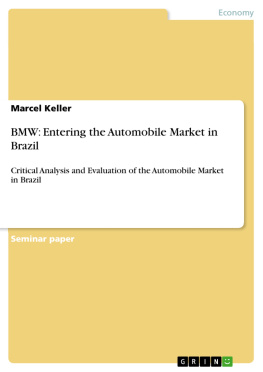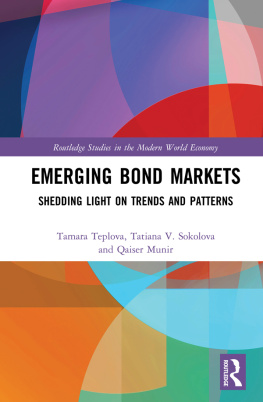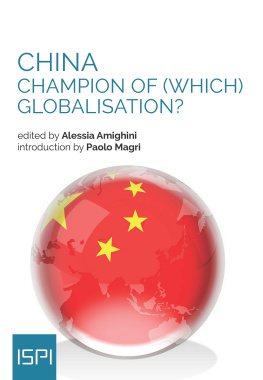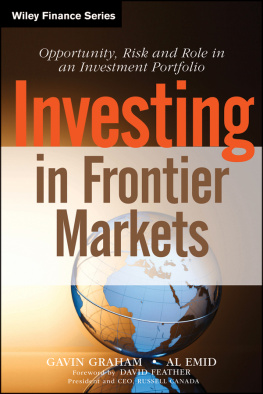Emerging Markets in an Upside Down World
For other titles in the Wiley Finance Series please see www.wiley.com/finance
This edition first published in 2014 by John Wiley & Sons Ltd
2014 Jerome Booth
Registered office
John Wiley & Sons Ltd, The Atrium, Southern Gate, Chichester, West Sussex, PO19 8SQ, United Kingdom
For details of our global editorial offices, for customer services and for information about how to apply for permission to reuse the copyright material in this book please see our website at www.wiley.com
All rights reserved. No part of this publication may be reproduced, stored in a retrieval system, or transmitted, in any form or by any means, electronic, mechanical, photocopying, recording or otherwise, except as permitted by the UK Copyright, Designs and Patents Act 1988, without the prior permission of the publisher.
Wiley publishes in a variety of print and electronic formats and by print-on-demand. Some material included with standard print versions of this book may not be included in e-books or in print-on-demand. If this book refers to media such as a CD or DVD that is not included in the version you purchased, you may download this material at http://booksupport.wiley.com . For more information about Wiley products, visit www.wiley.com .
Designations used by companies to distinguish their products are often claimed as trademarks. All brand names and product names used in this book are trade names, service marks, trademarks or registered trademarks of their respective owners. The publisher is not associated with any product or vendor mentioned in this book.
Limit of Liability/Disclaimer of Warranty: While the publisher and author have used their best efforts in preparing this book, they make no representations or warranties with respect to the accuracy or completeness of the contents of this book and specifically disclaim any implied warranties of merchantability or fitness for a particular purpose. It is sold on the understanding that the publisher is not engaged in rendering professional services and neither the publisher nor the author shall be liable for damages arising herefrom. If professional advice or other expert assistance is required, the services of a competent professional should be sought.
A catalogue record for this book is available from the British Library.
ISBN 9781118879672 (hardback/paperback) ISBN 9781118879665 (ebk)
ISBN 9781118879658(ebk) ISBN 9781118879641 (obk)
Foreword by Nigel Lawson
Jerome Booth was a key member of the 1999 buyout team that turned the Ashmore group into a highly successful investment manager specialising in emerging markets. Having made his fortune, he has now left Ashmore to devote his time to building up a portfolio of business start-ups, philanthropy (particularly in the area of music, his great love) and writing this admirable book.
The heart of the book is the case he makes for investing much more heavily than is customary at the present time in emerging markets, and is directed in particular although not exclusively to the institutional investor. It is, of course, widely recognised nowadays that for the foreseeable future the growth prospects of much of the developing world are very much greater than those of the developed world. At the very least, they still have a great deal of catching up to do; and the combination of globalisation and the change from top-down planned economies to largely market economies is enabling them to do so.
Yet despite this, Booth observes, a typical Western pension fund might have around 5% of its portfolio invested in emerging markets and 95% in developed world markets. In his judgement, the emerging market proportion should be more like 50% than 5%. So why have Western institutional investors, as he sees it, got it so wrong?
There are a number of reasons, but the most important is the assumption that the emerging world is a much riskier place to invest in. Booths thesis is that, if anything, the reverse is the case. The disastrous banking meltdown of 2008, following the excessive accumulation of debt of all kinds, sovereign and private alike, within what he likes to call the Highly Indebted Developed Countries, has created a risk of default, inflation (the alternative means of default) and sub-normal growth from which the much less indebted emerging world is largely free. At the very least, in his own words, All countries are risky: the emerging markets are those where this is priced in. In the HIDC, in his judgement, it is not.
You do not have to share his notably downbeat assessment of the likely economic prospect for the developed world at the present time to be persuaded that the conventional assessment of the relative riskiness of investing in emerging markets, as compared with investing in the Western world, is mistaken.
But although the case for investing in emerging markets is at the heart of this book, there is a great deal more to it than that. It is in fact a rare combination of investment expertise and financial sophistication, informed by a thoughtful analysis of the economic and political context in which investment decisions have to be made. In particular, he offers a good account of the causes of the Western worlds banking disaster, stressing in particular both the nonsenses produced by the combinaton of the rational expectations hypothesis and the efficient markets theory, and the extent to which banking and finance fell victim to the principal/agent problem (where the client or investor, as principal, is dependent on an agent whose interests and incentives may be very different from those of the principal).
Jerome Booth has written an original, challenging, stimulating and largely convincing book.
Acknowledgements
I would like to thank all those who contributed comments on earlier drafts and with whom I have debated the issues contained in the book. In particular I would like to thank my past colleagues at Ashmore, starting with Mark Coombs, from whom I have learnt more about emerging markets and investing than I could fit into several books let alone one, and my other management buyout partners Jules Green, Tony Kane, Milan Markovic, Chris Raeder and the late Will Mosely. I would also particularly like to thank Jan Dehn, who took over from me as Ashmores Head of Research and who has given me copious feedback on a number of earlier drafts. I also have benefitted greatly from comments from my ex-colleagues Ousmne Mandeng, Milan Markovic, Tolga Ediz, Cemil Urganci, Kevin Bond, Mark Weiller, Marlon Balroop and Karl Sternberg. I would also like to thank Greg McLeod for the cartoon in Chapter 5. The views in this book are of course my own and do not necessarily reflect the views of Ashmore. I also received detailed comments from Peter Oppenheimer. I am also indebted to my father, Jolyon Booth, for his comments and to Luis Ratinoff for inspiring me many years ago to write a book about money and finance, and for helping round out my education early in my professional career. I am also indebted to my other ex-Inter-American Development Bank friends Michael Jacobs (who, shortly after I had received my economics doctorate, teased me for being too efficient with my education), and Hctor Luisi, both of whom gave me detailed comments on earlier drafts. Likewise I am indebted to fellow emerging market investment guru Liam Halligan. I would also like to thank Adam Swallow for believing in this project, and a number of anonymous academic referees for their valuable comments on an earlier draft. My son Marcus helped me greatly in the preparation of the manuscript, as did Anisha Bansal and Claire Sowry. I would also like to thank all those investors and policymakers I have met over the last twenty years who have stimulated me to write the book. I have had countless people telling me I should write one. Somebody once even apologised to me for not reading it given the circumstances, I explained that that was quite understandable.

















